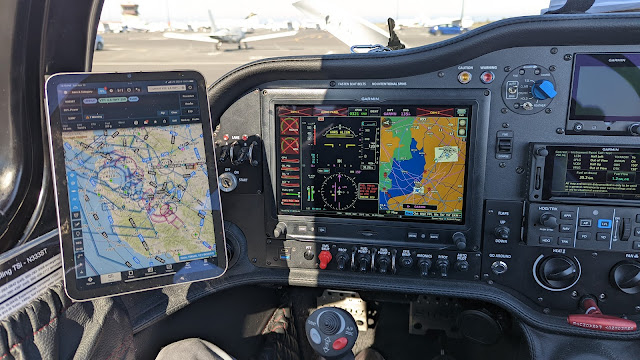Nylon Brake Lines
During the built of N333ST we decided to upgrade the standard brakes to Matco brakes. I am not entirely sure why we decided to do this, but I think we believed that these brakes would provide superior braking power. In hindsight I now realize that the plane has plenty of stopping power using the standard brakes.
Anyway, trouble started during flight testing. After 10 hours or so we noticed a brake fluid leaking from one of the brakes. A friendly mechanic fixed the leak by tightening the fittings that connect the nylon brake lines to the caliper.
Unfortunately, the problem came back after we finished flight testing and had flown home. We assumed (incorrectly) that the nylon line was not fitted properly into the caliper, and the bent was causing a leak.
To fix this I ordered a bunch of brake line parts online and tried to install a contraption to better line up the brake line with the fitting. Each time, this required bleeding the brakes, which in itself is a pain in the rear.
Eventually Jean at TAF came up with a solution; insert a thin metal tube as a transition to the nylon brake line. This allows the heat from the calipers to dissipate before it reaches the nylon brake lines. Apparently this is how the standard brakes are installed (duh). We have had no problems since this fix.
Before you ask; no it is not possible to use steel braided brake lines. They won't fit through the landing gear struts. You are stuck with the 1/8" nylon brake lines, which are fine, except that they don't handle the heat very well.
Notes; if you need to bleed the brakes, here are some things we learned:
- Tilt the plane back on its tail so that the main cylinder does not trap an air bubble.
- Use Loctite 567 Thread Sealant to seal any components
- Use fresh brake fluid, or use a vacuum to get all the gas out of it.
- Use suction at the fluid reservoir while applying pressure at the brakes.
- Don't tolerate any squishiness in the brakes, you will have to do it again.
- Bleeding the brakes is not fun, it is messy, and frustrating, so if you are smart, you get a mechanic to do it for you...







Have you considered using Beringer brake lines? They are teflon with stainless steel braiding on the outside.
ReplyDeleteYeah, but they don't fit through the holes in the landing gear.
Delete